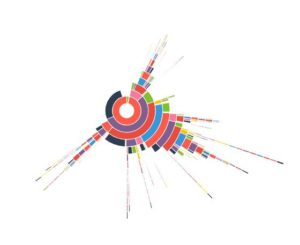Juristat: Statistic-Enhanced Patent Application and Prosecution for Patent Attorneys
Data is the sword of the 21st century, those who wield it well, the samurai. – Jonathan Rosenburg
Ignoring key information is inherently human. For example, base rate neglect is hardwired into each of us. It makes us prefer narrative and description over more useful statistics in our decision-making. We are also predictably bad at estimating probabilities because we look at small sample sizes and fall into Bayesian traps.
These issues can be particularly problematic in the perilous and resource-intensive labyrinths of patent application and prosecution. However, one service provider—juristat—offers a katana (or at least a Wakizashi) to patent samurai looking to increase the likelihood of success for their clients.
One analyst describes juristat as a company that “uses natural language processing to analyze public legal data and predict the future behaviors of actors within the legal system.” More broadly, juristat is a web-based service provider that offers several useful data analytics tools to patent attorneys:
First, juristat offers a claim drafting tool that can help patent attorneys predict the likely USPTO art or examining unit that will be assigned to a future patent application based on its claim language. A patent attorney can use this tool to anticipate and, by adjusting claim language, potentially pivot to a different and/or more favorable art unit before the patent application is ever filed.
Second, juristat offers a business intelligence tool that allows patent attorneys and patent applicants to examine and evaluate each other, including by using data on application numbers, types, and success metrics.
Third—and the tool I find most useful—are patent examiner reports. This tool allows a patent attorney to perform detailed analysis of metrics for the examiner assigned to a patent application he or she is prosecuting. Example metrics include:
- Number of applications examined (including by year);
- Allowance rate;
- Allowance rate compared to that of the examiner’s overall art unit;
- Average number of office actions per application;
- Reversal rates on appeal;
- Most frequent companies or assignees before the examiner; and
- Most frequent prosecuting law firms before the examiner.
Within juristat’s patent examiner reports, a patent attorney can also keyword search patent applications before the examiner, as well as rejection types, and common responses. More compelling is a dynamic and interactive graphical interface that allows a patent attorney to determine the baseline probabilities of future examiner decisions across various trajectories of prosecution points, including rejections and responses. Juristat calls this interface “detailed outcomes”, but in the pseudo-samurai tradition of this post, I prefer to call it the dynamic oracle of destiny:
By providing extensive baseline statistics and probability analysis, juristat’s tools can enhance a patent attorney’s perspective, allow for more informed client-communication and decision-making, and increase the likelihood of successfully obtaining patent protection.

